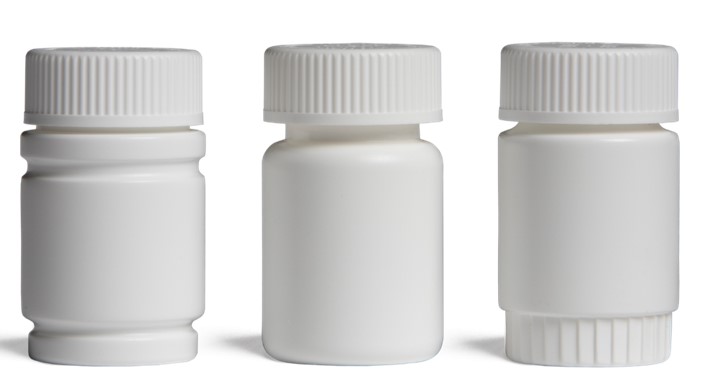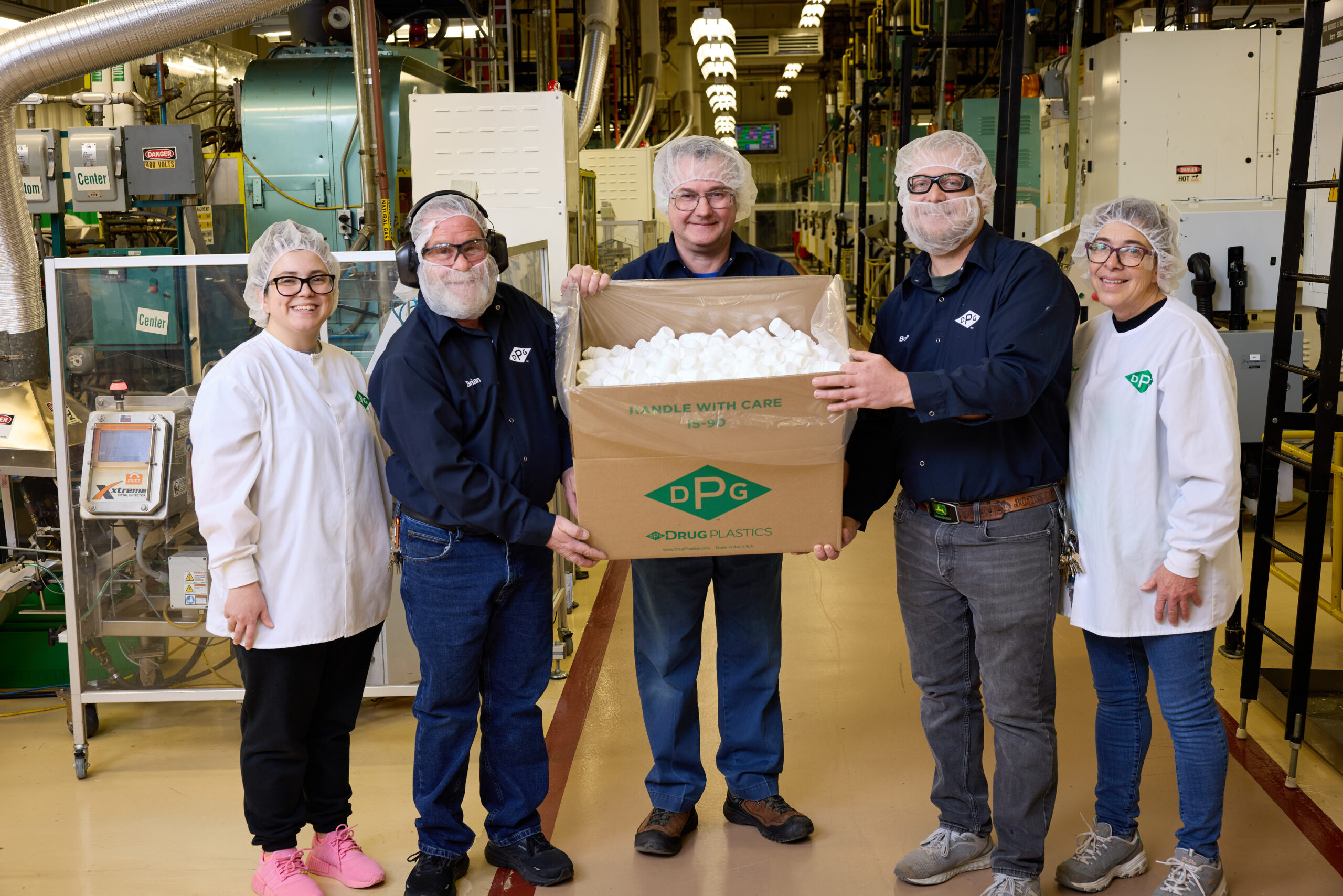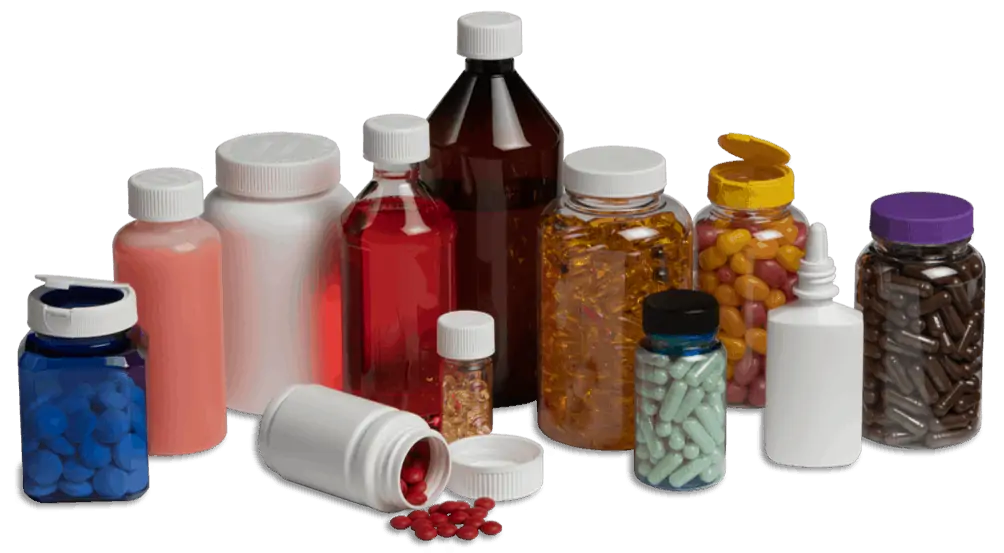Secure plastic packaging for products has become more important over the last several decades. The best product packaging protects and contains the contents inside for consumers, and also enhances a brand. For products that are potentially harmful to children, child resistant plastic packaging is crucial.
At Drug Plastics, we take secure packaging seriously. That’s why every product we offer is designed and manufactured to help our customers help people live healthier, safer, happier lives. We manufacture a variety of child resistant closures that work with our bottles to make a complete child resistant packaging system. Our focus is understanding the packaging needs and challenges of the healthcare markets.
This allows us to service our customers better than anyone else. We work with our customers to identify, design, and manufacture the correct product packaging every day. We also believe it’s helpful for our customers to understand why child resistant packaging is so important. Let’s review the origins of child resistant packaging.
Origins of Child Resistant Packaging
The concept of child resistant packaging was introduced in the late 1960s. Back then, pediatricians ranked accidental poisoning from the ingestion of certain medications and other household substances as the leading cause of injuries among children under five years old. In 1970, the United States Congress passed legislation requiring specific safety measures for potentially harmful products.
After Congress passed the legislation, President Richard Nixon signed the Poison Prevention Packaging Act (PPPA) into law. This act was a monumental leap forward in public safety. The PPPA requires packaging for certain medications and household products packaging must be “designed or constructed to be significantly difficult for children under five years of age to open within a reasonable time, and not difficult for normal adults to use properly.” CR packaging should mitigate a child’s accidental ingestion of potentially poisonous substances, while still allowing ease of access for adults, particularly the elderly and the handicapped, who often use these medications.
 The Consumer Product Safety Commission (CPSC) is responsible for enforcing the PPPA. The CPSC also determines which products meet the criteria for requiring child-resistant packaging. Even with the PPPA, a package that is child-resistant is never a full-proof solution. A nearly two-decade evaluation of the National Center for Health Statistics underlying cause of death files revealed that child deaths from unintentional ingestion of oral prescription drugs were reduced after the PPPA was enacted.
The Consumer Product Safety Commission (CPSC) is responsible for enforcing the PPPA. The CPSC also determines which products meet the criteria for requiring child-resistant packaging. Even with the PPPA, a package that is child-resistant is never a full-proof solution. A nearly two-decade evaluation of the National Center for Health Statistics underlying cause of death files revealed that child deaths from unintentional ingestion of oral prescription drugs were reduced after the PPPA was enacted.
While it’s projected that child resistant packaging reduced deaths among children from accidental poisoning by 45%, two factors may have led to a lower than expected reduction in mortality. First, noncompliance with the special packaging regulations at the pharmacy, and second, poisonings from prescriptions originally dispensed in child resistant packaging that were left unsecured at the time of ingestion. This shows that parent supervision, proper safety, and correct storage measures at home are still very important.
Products that Require Child Resistant Packaging
There are many products that require child resistant packaging, as outlined by the CPSC. While the entire list is outside the scope of this article, we’ve included some of the most common products relating to the pharmaceutical, wellness, and lifestyle industries below.
Pharmaceuticals
Pharmaceutical products that contain specific amounts of the following ingredients require child resistant packaging: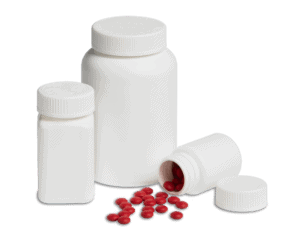
- Aspirin
- Acetaminophen
- Ibuprofen
- Elemental iron
- Naproxen
There are many other self-care medications for which the CPSC requires CR packaging, including any OTC drug that once required a prescription to obtain.
Nutraceuticals
Many vitamins and dietary supplements are within the PPPA, and require child resistant packaging under certain circumstances. For example, products that contain iron require child resistant packaging under the CPSC criteria. Because iron is toxic in high doses, particularly to children, supplements containing irons in specific weight-to-volume ratios must be sold in child resistant packaging.
Lifestyle Products
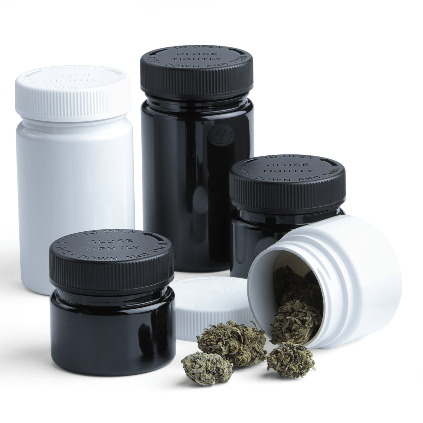
Understanding the packaging requirements for lifestyle products (like cannabis) is especially challenging because many are still illegal at the federal level. The federal government does not provide packaging regulations for these product types outside of the standard labeling requirements for all food, beverages, and supplements. Packaging requirements for medical or recreational cannabis are determined at the state level, and can vary greatly, depending on where the manufacturer is located. Many states have strict child resistant and tamper-proof packaging requirements.
To better understand these important federal requirements, we recommend visiting the Electronic Code of Federal Regulations for a current and complete list of products that require child resistant packaging. It is recommended that individual state guidelines are also reviewed to ensure compliance.
Why Secure Product Packaging is Important to Your Brand
Product packaging is the first point of contact a consumer has with your brand. Investing in packaging that makes an impactful first impression is crucial to a company’s success. From label design to shelf presence, there are many characteristics that packaging needs to work for your brand. However, security is the most significant concern for products that could potentially harm consumers and children. In addition, if a package does not appear secure, consumers won’t purchase it. This can be detrimental to a brand’s image.
Ensuring a product and its packaging are secure for consumers should always include a Design Hazard and Safety Risk Analysis (DHSRA) to review all possible risks of misusing the product, including accidental ingestion of the product by children. This type of analysis has been used by many industries as a valuable tool to brainstorm and predict product misuse by users, and imminent danger before going to market. If a situation occurs where safety hazards increase or risk profiles change once products are in market, a post-commercialization DHSRA is warranted.
After a hazard review is complete, companies should review a variety of available child resistant packaging solutions. There could be more than one solution that would work for the product, but a decision has to be made which is the right one for the brand. This is important for three reasons:
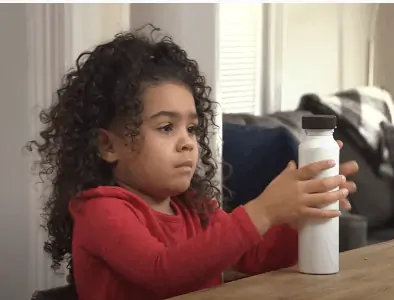
- Children adapt to common types of child resistant packaging, making older solutions increasingly ineffective. Outdated packaging that looks old-fashioned does not look good on a modern brand.
- The needs of consumers change. Packaging that was commonplace a decade ago may no longer be as consumer-friendly or attractive.
- Newer packaging solutions are developed that are both more secure and offer a better experience for the consumer.
It is vital to work with a knowledgeable packaging manufacturer that is on the cutting edge of new technologies and innovation. They can be a trusted advisor on which child resistant packaging options are no longer used and which new types are being developed.
Child Resistant or Senior-Friendly? You Can Have Both
Our product experts at Drug Plastics have developed several exclusive child resistant closures that work with our bottles to make dependable packaging systems. Even though product packaging must be difficult for children to open, it still must be user-friendly for seniors, and those adults with limited finger mobility. Our commitment to secure and innovative packaging design ensures that your product will be protected from children, while still remaining easy to use for adults.
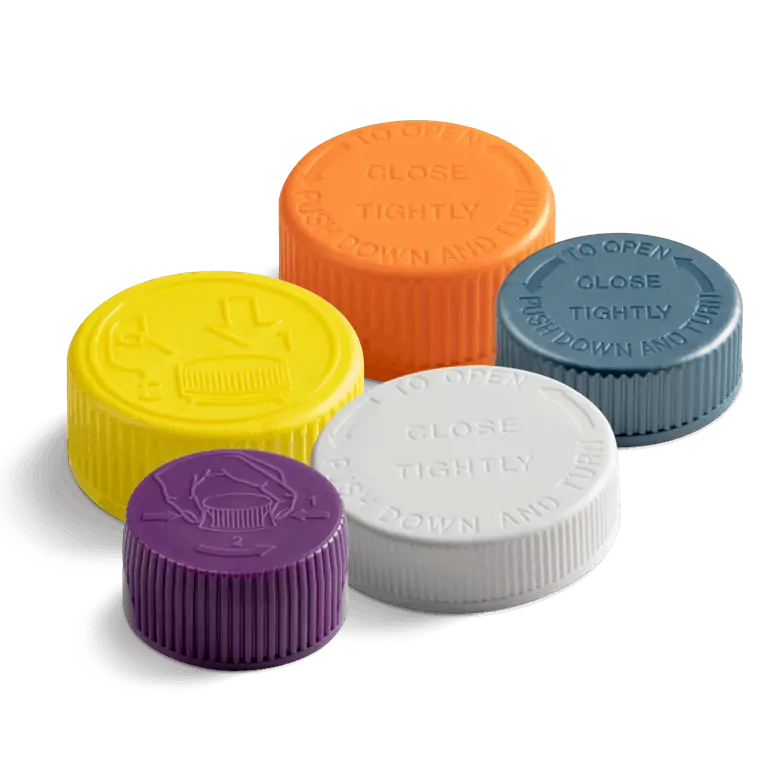
Here are a few examples of child resistant closures options that maintain easy opening for seniors available from Drug Plastics.
SecuRx® Child Resistant Closures
Our exclusive SecuRx child resistant closures are two-piece, lined closures that are removed from a bottle by simultaneously pushing down and turning the closure. Available in a variety of designs, with either text top and pictorial instructions on the cap, SecuRx closures are a popular choice for a many products that require child resistant packaging. Interested in learning more about our SecuRx closures? View our Information Sheet.
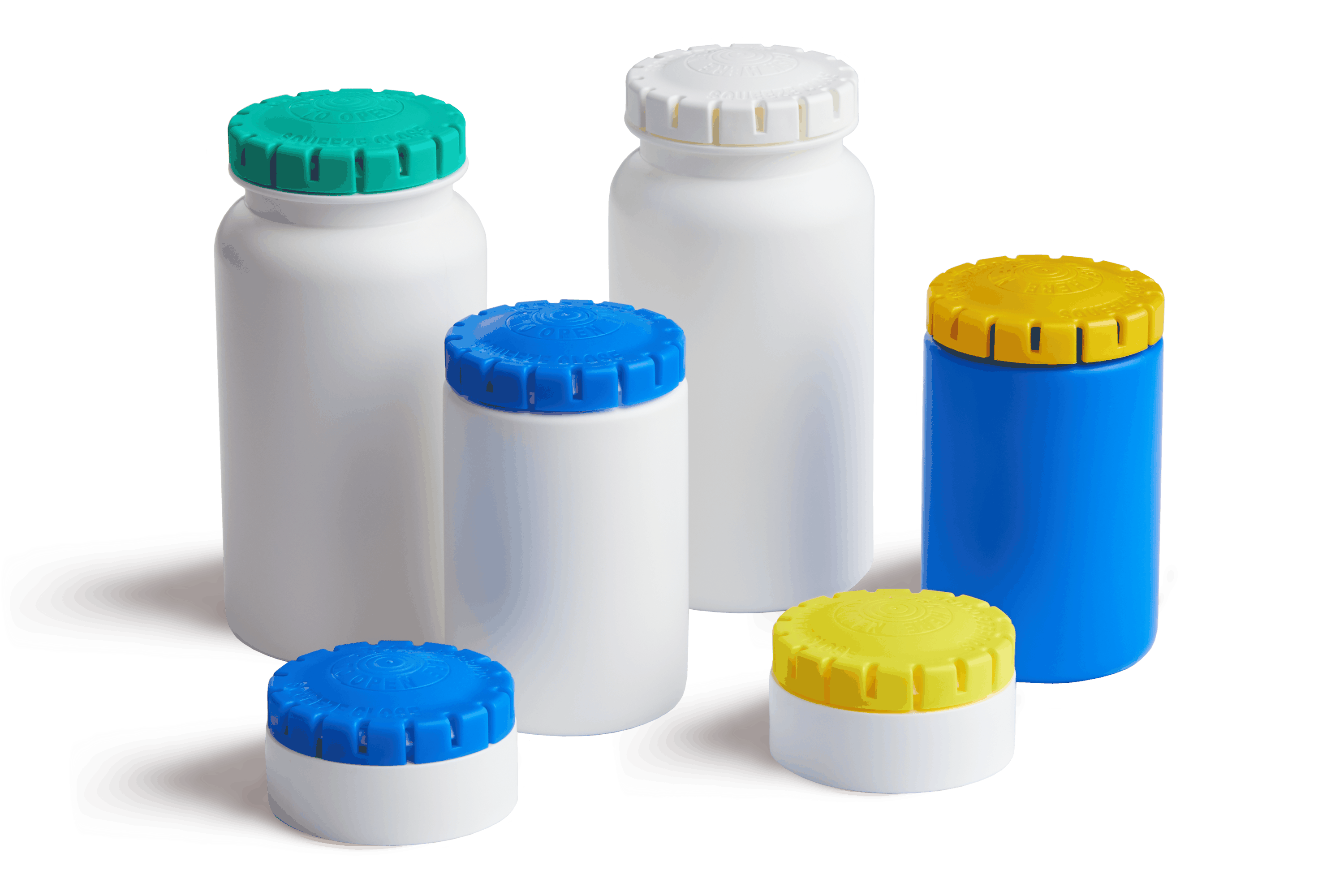 Pop & Click™ Packaging System
Pop & Click™ Packaging System
The unique design of our Pop & Click Packaging System creates a “wow” factor and differentiates your brand from the competition. These innovative closures are child resistant for compliance and security, with an easy-to-use closure system, especially for individuals who struggle with traditional child resistant closure systems. Learn more about Pop & Click Packaging Technology.
We Can Help You Navigate Complex Packaging Challenges
Although we have a large inventory of stock bottles and closures, custom design challenges are our specialty. We take time to understand our customers’ needs and learn about their products. Details matter to us. We care about every customer and strive to provide them with the best product packaging solution.
When you work with Drug Plastics, you have access to over 60 years of manufacturing knowledge and expertise. We can help you find the best solution for your packaging challenges – a solution that considers your product, your brand, and your consumers’ needs. Let us provide you with peace-of-mind that your products will meet the tough regulatory requirements for your industry. Call 610-367-5000 to speak with a knowledgeable representative and find out more.
